The Samsung 960 EVO (1TB) Review
by Billy Tallis on November 15, 2016 10:00 AM ESTSequential Read Performance
The sequential read test requests 128kB blocks and tests queue depths ranging from 1 to 32. The queue depth is doubled every three minutes, for a total test duration of 18 minutes. The test spans the entire drive, and the drive is filled before the test begins. The primary score we report is an average of performances at queue depths 1, 2 and 4, as client usage typically consists mostly of low queue depth operations.
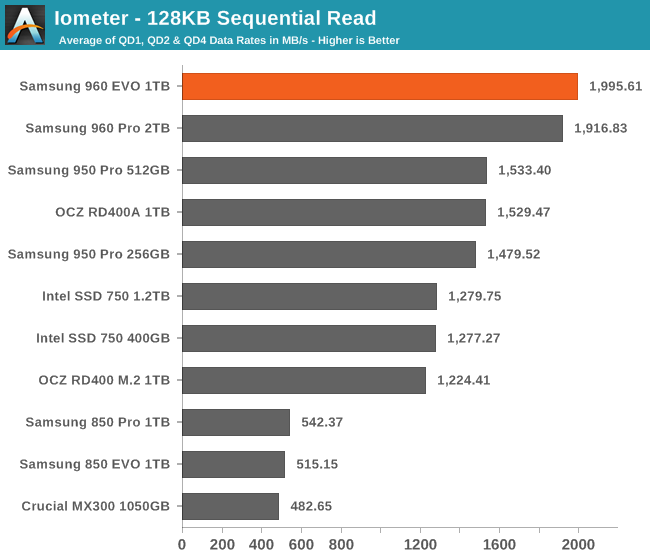
The 960 EVO provides slightly higher sustained sequential read speeds than the 960 Pro in a test where both are largely thermally limited. No other SSD comes close to offering this level of performance at low queue depths.
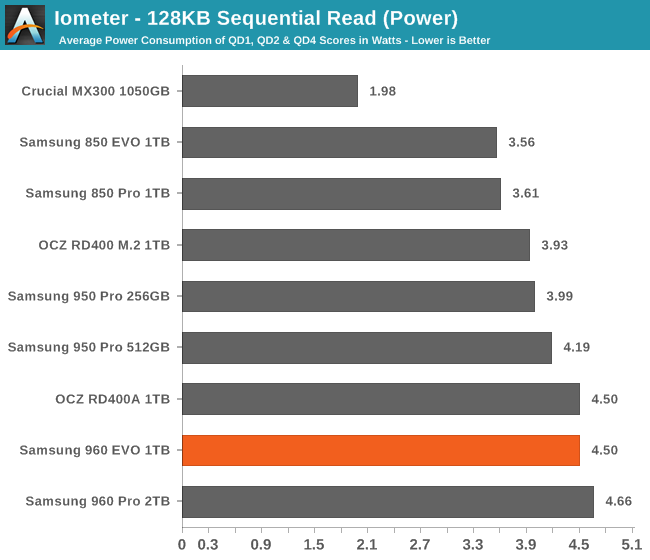
With power consumption slightly lower than the 960 Pro, the 960 EVO actually manages to set an efficiency record.
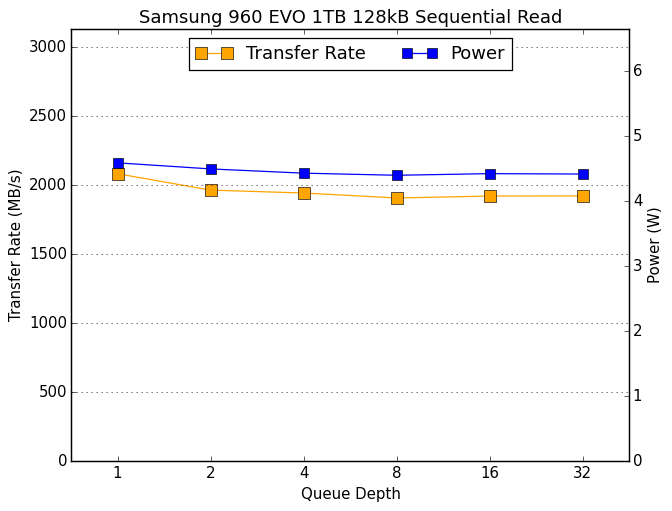 |
|||||||||
The competing drives that have large heatsinks can provide better performance at higher queue depths, but within the constraints of the M.2 form factor Samsung has a huge advantage.
Sequential Write Performance
The sequential write test writes 128kB blocks and tests queue depths ranging from 1 to 32. The queue depth is doubled every three minutes, for a total test duration of 18 minutes. The test spans the entire drive, and the drive is filled before the test begins. The primary score we report is an average of performances at queue depths 1, 2 and 4, as client usage typically consists mostly of low queue depth operations.

The sustained sequential write speed of the 960 EVO is far slower than the 960 Pro and several of the better-cooled competitors, but the 960 EVO is actually slightly faster than last year's 950 Pro.
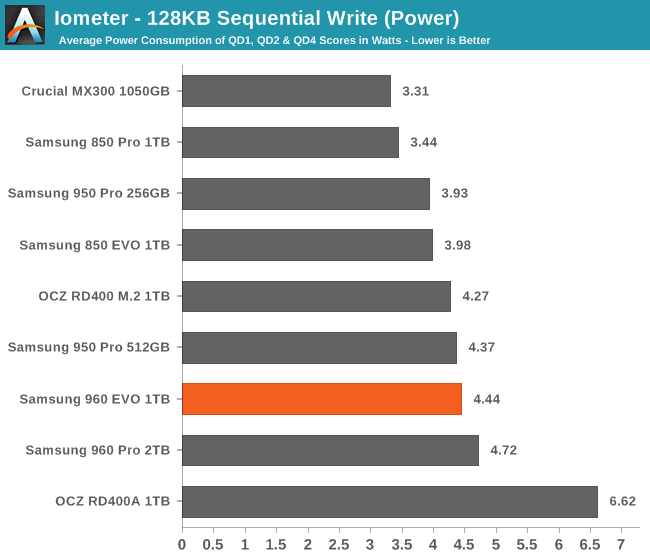
The 960 EVO doesn't break any records for power efficiency, but only because the 960 Pro exists. The MLC-based competition is less efficient than the TLC-based 960 EVO.
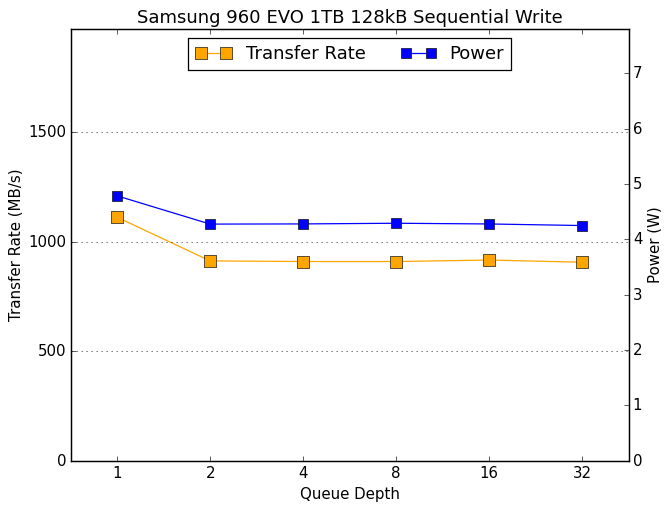 |
|||||||||
For almost all of the sequential write speed test, the 960 EVO is thermally limited, but it is clearly able to do much more within that limit than the 950 Pro or OCZ RD400 could.










87 Comments
View All Comments
TheinsanegamerN - Tuesday, November 15, 2016 - link
Is there currently any consumer software that can change these settings?Billy Tallis - Tuesday, November 15, 2016 - link
I use nvme-cli on Linux to manually test these settings, and there's a patch working its way toward a stable kernel release that will let supporting drives automatically make use of their various idle states. I'm not aware of any Windows tools that give the same degree of fine-grained control, but Intel's tools for enterprise SSDs and the 750 have some power management options.TheinsanegamerN - Tuesday, November 15, 2016 - link
That would be nice. I'd love to be able to set my 950 pro to a max of, say 2 watt on battery, or set the maximum speed to sata III speed (on battery), if it meant better battery life, and enable full speed when on mains power.philehidiot - Tuesday, November 15, 2016 - link
Yeh I noted the thermal limits kicking in and I did wonder if there's any major benefit from hacking these things, putting on some thermal goop, a big heat sink and a fan. Obviously it'll probably not help in the majority of cases but the mentalist part of me was pondering just how much performance there is to be unlocked.TheinsanegamerN - Tuesday, November 15, 2016 - link
The fan would be a bit of overkill, but the 950 pro showed some gains with a passive heatsink installed. The 960 would probably benefit even more.philehidiot - Tuesday, November 22, 2016 - link
Time to break out the liquid nitrogen. If anyone at work asks where it has all gone I'll just say I was remove the mother of all warts from a patient.philehidiot - Tuesday, November 22, 2016 - link
*removing. Bloody spelling.nagi603 - Tuesday, November 15, 2016 - link
A shame they dropped the write endurance to half of the 950!TheinsanegamerN - Tuesday, November 15, 2016 - link
TLC vs MLCbull2760 - Tuesday, November 15, 2016 - link
Why do you not show consistent results. In some tests you include the Intel 750 and on other you exclude it in the graph. You excluded the Intel 750 in the power consumption both times. Are you not able to calculate the power being used when the Intel drive is being used?